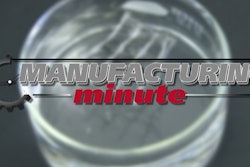to Reducing Your
Development & Operating Cost
this Year
Hidden Obstacles
Brought To You By:
2 /// 5 Hidden Obstacles to Reducing Your Development & Operating Cost this Year
Quality Issues
Missing quality goals and managing quality issues is critical.
Using spreadsheets and email to capture complaints,
defects, and nonconformities makes it hard to proactively
plan, accurately document, or simulate the development
of high quality products, especially across teams.
Quality issues are less likely to be visible when they
are not supported by a streamlined procedure setup to
detect, correct, and maintain standards. Capturing quality issues
at the part, where and when they happen, and taking corrective
actions as part of an integrated software system allows a quicker
collaborative review and approval by the groups that need them.
Catching and dealing with issues before they become a problem
is key to maintaining a lower cost of quality. Reducing quality issues
saves costs by minimizing rework, retesting, rebuilding, internal
costs of failure such as scrap and lost material, and external failure
costs at a customer site due to returns, repairs, and recalls.
Preparing and implementing quality plans help prevent quality
issues from surfacing. Quality issues can be reduced using integrated
methods instead of manual ones at all stages of the value chain,
saving money and time. Scrap & Rework
These costs are a reality of doing business, and they
can come from anywhere. Not having the right parts
ordered or available, not communicating changes to
materials or procedures, using the wrong specs,
discarding many single-use prototypes or tests, and
product returns all raise the cost of scrap and delay
development and can severely impact a business if
not detected until late in the product cycle.
The sources of scrap and rework can be hidden, especially
when manual processes are used anywhere in the supply chain for
documenting and communicating changes, creating or filling bill of
materials (BOMs), or on the manufacturing floor. Manually passing
forms from person to person is time consuming and distribution
lists need constant updating. Keeping up with version control
manually is extremely complex especially when multiple people,
multiple products, and multiple parts change. Email offers limited
options for automating notifications and virtually no option for
notifying about upcoming changes.
Keeping current and correct is key. The best companies consistently
follow documented processes and have digitally managed new product
development workflows, product, and project data integrating a wide
variety of departments so they can get timely input.
Companies managing their bill of materials and change order processes
with traditional spreadsheet and email methods will always face un-scalable obstacles
towards reducing development time and operating costs.
Top performing companies with higher revenue growth, margin expansion,
and portfolio expansion found a better way to avoid the five most common
barriers and develop new products.
3 /// 5 Hidden Obstacles to Reducing Your Development & Operating Cost this Year
Material & Supplier Spend
Along with using spreadsheets and email systems for
BOM management comes collaboration challenges which
lengthen development time and create hidden costs.
They don’t offer automation, notification, integration,
or visible approvals for changes, and it’s harder to
generate unique item numbers in a manual system.
Automated, cloud-based BOM management tools
now allow attachments that teams can quickly access, provide
advance warnings about upcoming planned changes to parts,
and the ability to easily compare previous BOMs making changes
very easy for all stakeholders to see. They provide forecasting and
reporting tools that capture all associated costs of a product or
project in development, making it easier to locate hidden material
costs that may not have been captured or attached correctly with
a manual system.
Inefficient Processes
Manual and inefficient processes are costly. They erode
timelines, budgets, and product revenues. There are
many problems hidden inside development processes
that may be considered status quo that increase the
risk of error, duplication, and escalating costs. Using
tools that don’t offer customization or those that are
over-customized to the point of only being understood,
usable, or readable by a single person also leads to inefficiencies.
Looking at development processes to see where they can be
optimized, streamlined, made consistent, more compliant, or in some
other way improved is the first step. Identifying where new technology
can help solve problems is the next.
Companies that adhere to their product development processes
and integrate them with their data and systems across projects,
departments, and lifecycle, have better product development
results. Taking a digital approach to integrating systems, building
automation into tasks and workflows, and using cloud-based systems
helps not only control processes, but it supports employees and
provides them ways to collaborate to remove inefficiencies, and
lowers logistics costs.
Automated, cloud-based BOM management tools now allow attachments
that teams can quickly access, provide advance warnings about
upcoming planned changes to parts, and the ability to easily compare previous BOMs
making changes very easy for all stakeholders to see.
4 /// 5 Hidden Obstacles to Reducing Your Development & Operating Cost this Year
Autodesk makes software for people who make things. If
you’ve ever driven a high-performance car, admired a towering
skyscraper, used a smartphone, or watched a great film,
chances are you’ve experienced what millions of Autodesk
customers are doing with our software. Autodesk gives you the
power to make anything. For more information visit autodesk.
com or follow @autodesk.
Advantage Business Media is a data-driven marketing solutions
company leveraging content, technology, and business
intelligence to match its audience’s job performance needs
with its clients’ solutions. With a diversified portfolio of highly
focused websites, e-newsletters, print publications, specialized
directories, vertical search databases, conferences, ancillary
media vehicles, and associated web-based services, ABM
serves more than one million industry professionals in the
manufacturing, science, and design engineering markets. For
more information visit advantagemedia.com.
About Advantage Business Media About Autodesk
Time To Market
Not focusing on hitting deadlines or paying attention
to time to market impacts profitability sometimes causing
windows of opportunity to close. If a product is too late to
market, companies could lose their selection as a primary
supplier, cyclical or seasonal products could be delayed
until the following year. Missed launch dates could mean
competitors gobble up high margins by being first on the
scene impacting revenue targets and market expectations.
In most industries, time to market demands have become shorter,
putting pressure on new product development teams to shrink
product development cycles despite the fact that products are
becoming more complex to develop.
This obstacle is hidden because it seems to be a no-win balancing
act; companies often sacrifice time to market in order to hit other
goals. Especially in companies with short life-cycle products, a
desirable TTM is fast enough not to miss product and market
opportunities and gain high ROI, but long enough to ensure
appropriate time to ensure high satisfaction and fit for purpose.
The best companies take a more integrated approach to compressing
timelines as part of their emphasis on product quality and reliability.
Understanding, monitoring, and integrating processes that focus
on time allow top performers to get things right the first time.
Rarely do spreadsheet or email systems contain reporting functions
about the time to complete BOM changes, stages, gates, and tasks
that could be emphasized as key performance indicators.
Top performing companies implement Product Lifecycle Management
solutions to avoid these barriers and out perform their competition to
market.
Understanding, monitoring, and integrating processes that focus on time allow
top performers to get things right the first time.
5 Hidden Obstacles to Reducing Your Development and Operating Cost this Year
Ever year, the majority of companies are looking for ways to reduce development and operating costs. The ease of which is dependent on the methods for managing bills of materials and change order processes. This white paper outlines 5 hidden obstacles that you may encounter when attempting to reduce your development and operating costs this year and how to overcome them.
Latest in Home
NHTSA Investigating Tesla Door Handles That Could Trap Passengers
September 16, 2025
Ford to Cut Up to 1,000 Jobs at German Plant as EV Demand Lags
September 16, 2025
It's 'Do or Die' for EV Maker Rivian
September 16, 2025






















